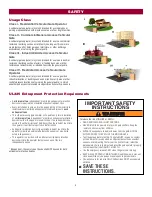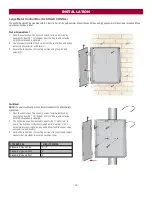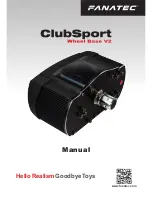
3
Usage Class
Class I - Residential Vehicular Gate Operator
A vehicular gate operator (or system) intended for use in garages or
parking areas associated with a residence of one-to four single families.
Class II - Commercial/General Access Vehicular
Gate
A vehicular gate operator (or system) intended for use in a commercial
location or building such as a multi-family housing unit (five or more
single family units), hotel, garages, retail store, or other buildings
accessible by or servicing the general public.
Class III - Industrial/Limited Access Vehicular
Gate
A vehicular gate operator (or system) intended for use in an industrial
location or building such as a factory or loading dock area or other
locations not accessible by or intended to service the general public.
Class IV - Restricted Access Vehicular Gate
Operator
A vehicular gate operator (or system) intended for use in a guarded
industrial location or building such as an airport security area or other
restricted access locations not servicing the general public, in which
unauthorized access is prevented via supervision by security personnel.
UL325 Entrapment Protection Requirements
l
A
minimum of two
independent* monitored entrapment protection
devices are required to be installed at each entrapment zone
l
Every installation is unique. It is the responsibility of the installer to
install external monitored entrapment protection devices in
each
entrapment zone
l
This vehicular swing gate operator will operate only after installation
of a
minimum of two
independent* monitored entrapment protection
devices in either the open or close direction. If no entrapment zone
exists in the other direction of gate travel, then the inherent (built into
the operator) is all that is required in that direction.
l
Entrapment protection device types include inherent (built into the
operator), monitored external photoelectric sensors or monitored
external edge sensors
l
This operator is provided with an inherent entrapment protection
device built into the operator that serves as one of the two
independent devices
* Independent - the same type of device shall NOT be used for both
entrapment protection devices.
IMPORTANT SAFETY
INSTRUCTIONS
To reduce the risk of INJURY or DEATH:
l
READ AND FOLLOW ALL INSTRUCTIONS.
l
NEVER let children operate or play with gate controls. Keep the
remote control away from children.
l
ALWAYS keep people and objects away from the gate. NO ONE
SHOULD CROSS THE PATH OF THE MOVING GATE.
l
Test the gate operator monthly. The gate MUST reverse on contact
with an object or reverse when an object activates the noncontact
sensors. After adjusting the force or the limit of travel, retest the
gate operator. Failure to adjust and retest the gate operator properly
can increase the risk of INJURY or DEATH.
l
Use the emergency release ONLY when the gate is not moving.
l
KEEP GATES PROPERLY MAINTAINED. Read the owner’s manual.
Have a qualified service person make repairs to gate hardware.
l
The entrance is for vehicles ONLY. Pedestrians MUST use separate
entrance.
l
SAVE THESE
INSTRUCTIONS.
SAFETY




































